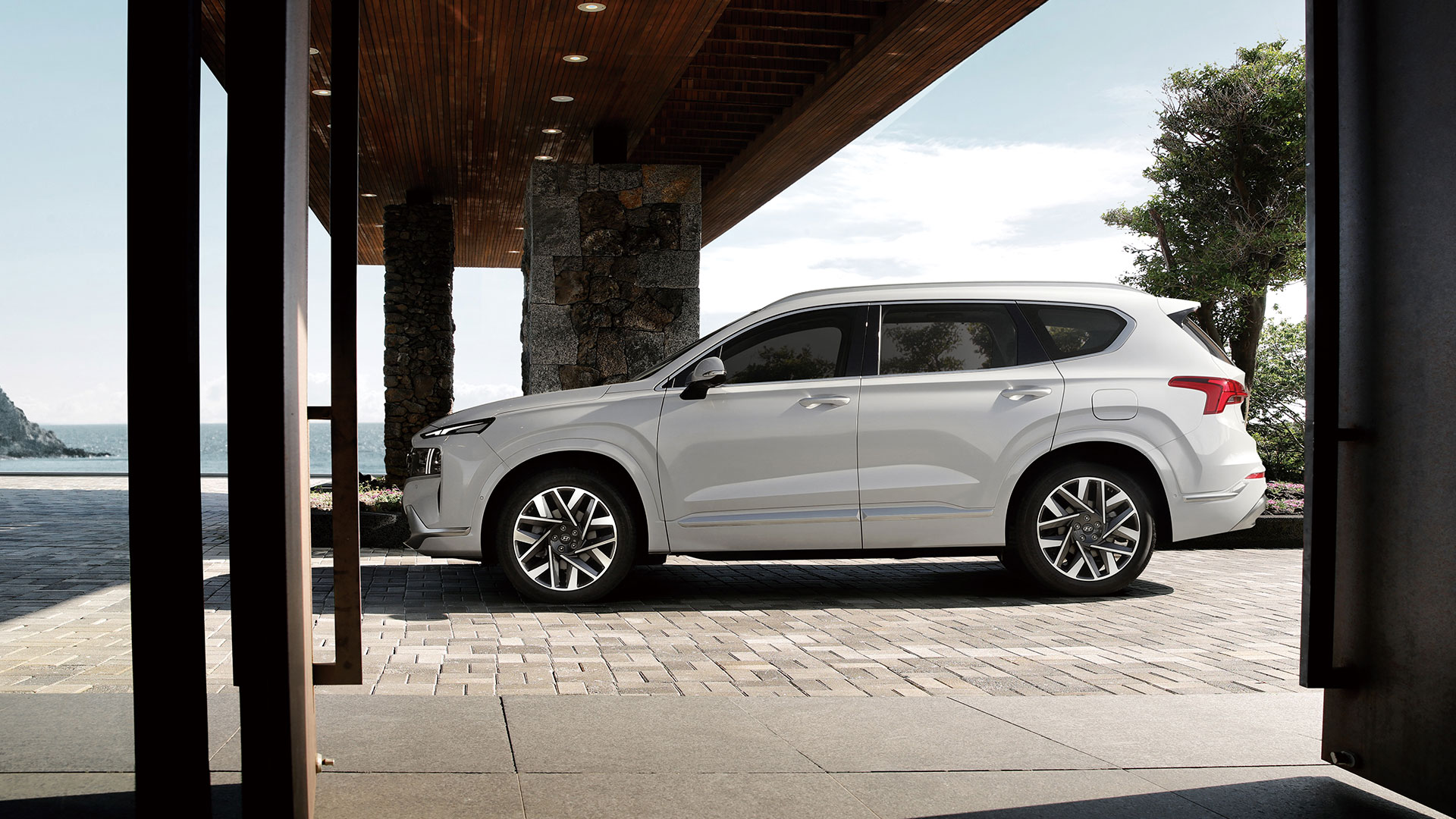
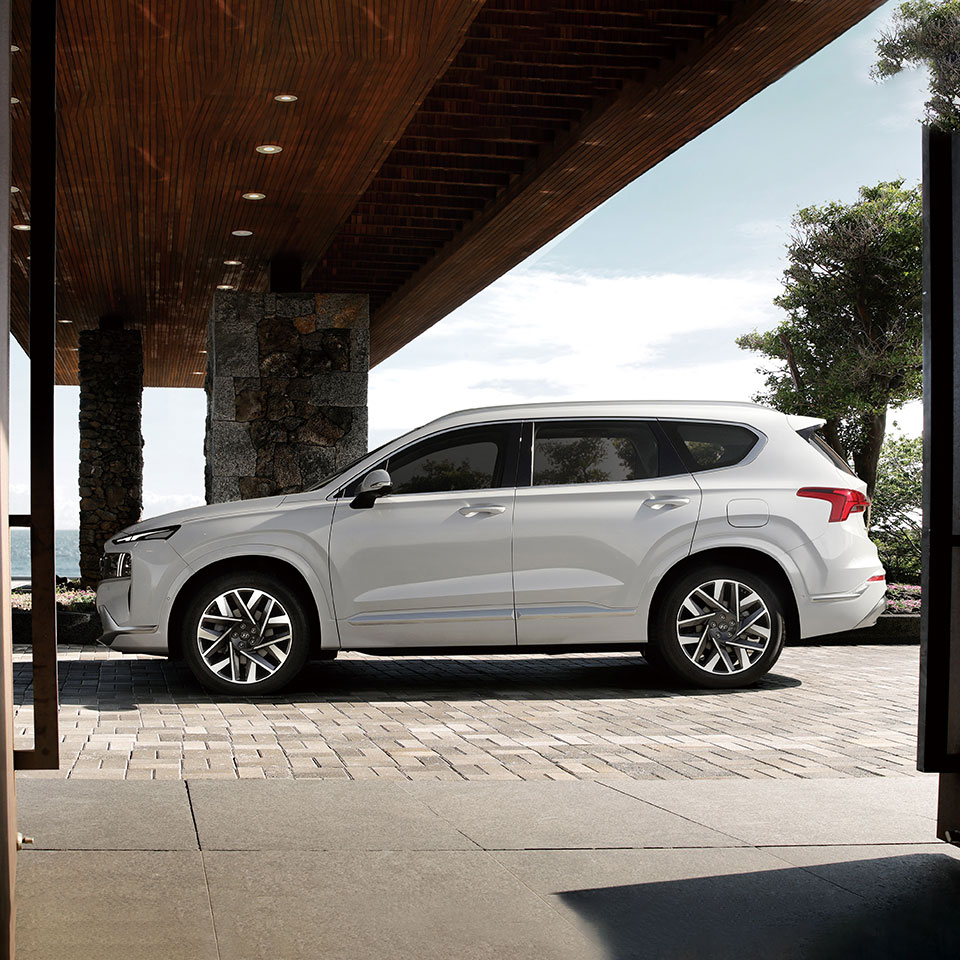


There has been much love for the Hyundai Motor Company’s 4th-generation Santa Fe; not only does it hold the brand’s SUV record for pre-release reservations, but it also has sold more than 200,000 cars in the domestic Korean market alone. The sharp, pronounced design, roomy interior, and family-oriented ‘Calm Tech’ features have been embraced with open arms by the model’s target demographic, family men in their 30s to 40s.
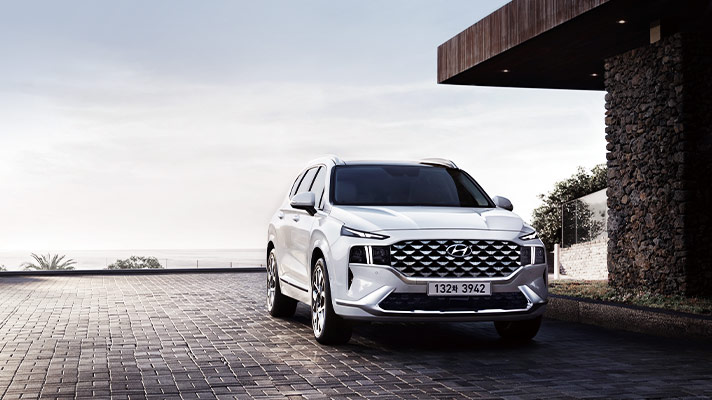
And the 4th-gen Santa Fe is back with a major facelift. The trademark composite headlamp design of a Hyundai SUV was maintained, but the radiator grille was expanded to produce a lither and more refined image. This change of facade is garnering much attention from the public, but the changes to the new Santa Fe are more than meets the eye. Particularly notable are the changes to the platform―the “skeleton” of a vehicle.
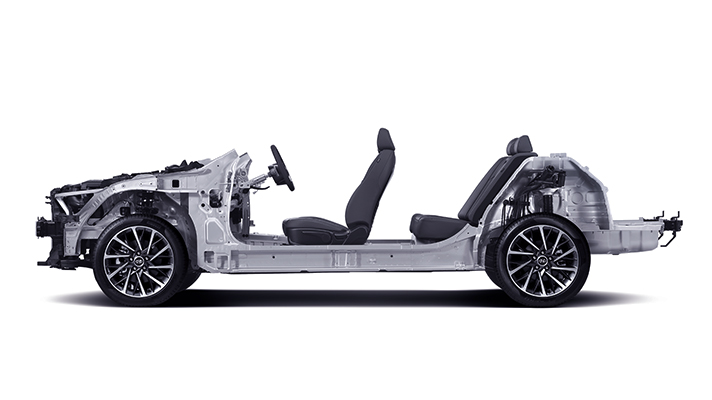
The automotive industry can be said to be in a “platform war”: with the more efficient and economical modular platform now having become mainstream, every manufacturer is focusing its technological capabilities on producing the most consummate platform. Given the advent of hybrid and electric vehicles, the platforms need to be redesigned to accommodate batteries of electronic powertrains as well. That is to say, platform design and production are increasingly becoming important for a modern car manufacturer.
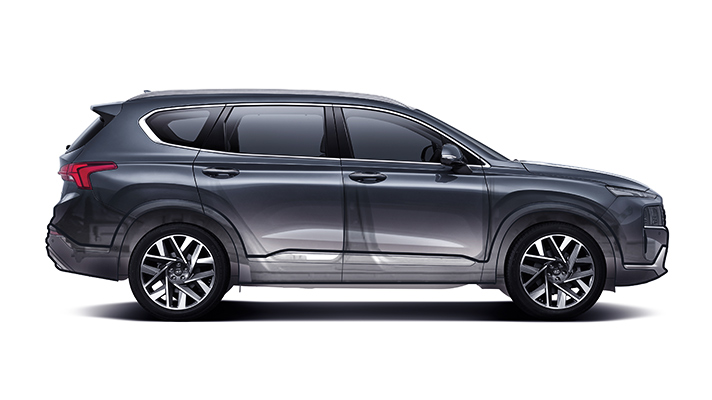
Of course, the Hyundai Motor Group has risen up to the challenge and unveiled a range of platforms to suit diverse functions. The 3rd-generation platform―lighter, safer, and with the lower center-of-gravity design whose packaging efficiency even ensures a more spacious interior―is one such example. Beginning with the 8th-gen Sonata, this platform is now being mounted on other Hyundai and Kia models. And because its modular structure allows for much flexibility in design, the platform is being applied to SUVs as well.
The new Santa Fe preserves the qualities that made the original such a great family car and absorbs the advantages of the new platform on top. The tacit rules of the “facelift,” which imply slight changes in appearance and convenience features, were broken in bold strides. Indeed, with the introduction of the new platform, Santa Fe’s “facelift” became, quite literally, not just about the face.
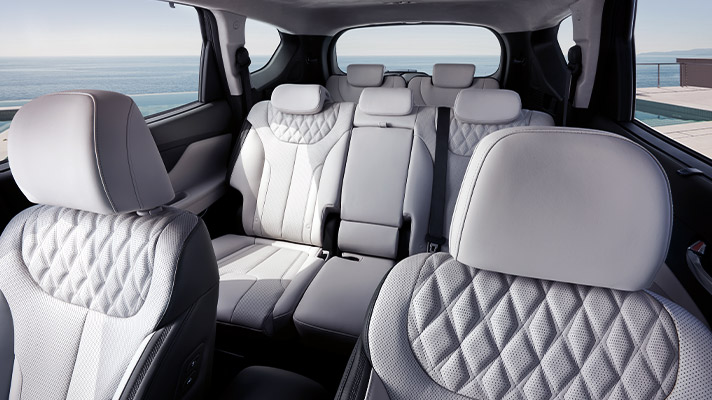
And that is the reason why the new Santa Fe was able to make its interior more spacious, a kind of an upgrade one would expect only in a generation change. Despite having the same wheelbase dimension (a typical index that helps one gauge interior spaciousness) as the previous generation’s, the new Santa Fe optimized its seat locations and increased the second-row legroom by 39 mm (7-seater, 1,040 mm). The storage space also became larger. The 7-seater model’s storage space is now 782 liters, an increase of 32 liters over the previous generation, while that of the 5-seater model sits at 831 liters, an increase of 12 liters. Indeed, a supposed ‘facelift’ has resulted in an improved interior space that compares favorably even to that of large SUVs.
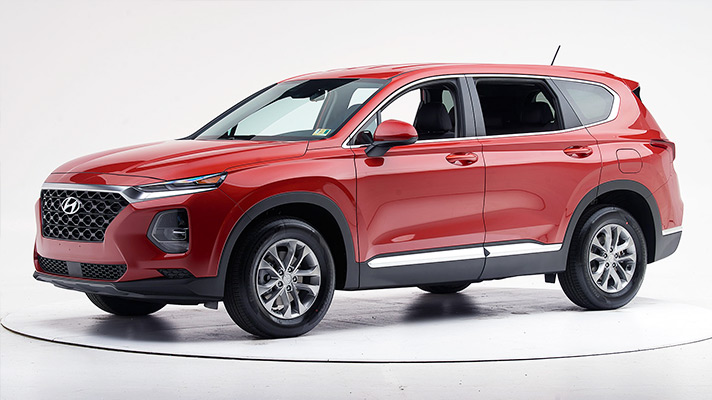
The 4th-generation Santa Fe already had a reputation for great safety. Even before the facelift, the model had received 1st-grade marks in the domestic KNCAP crash tests and likewise secured top marks in the major European and U.S. based crash tests as well. But with the improved 3rd-generation platform at the core, the new Santa Fe figures to be even better in this regard.
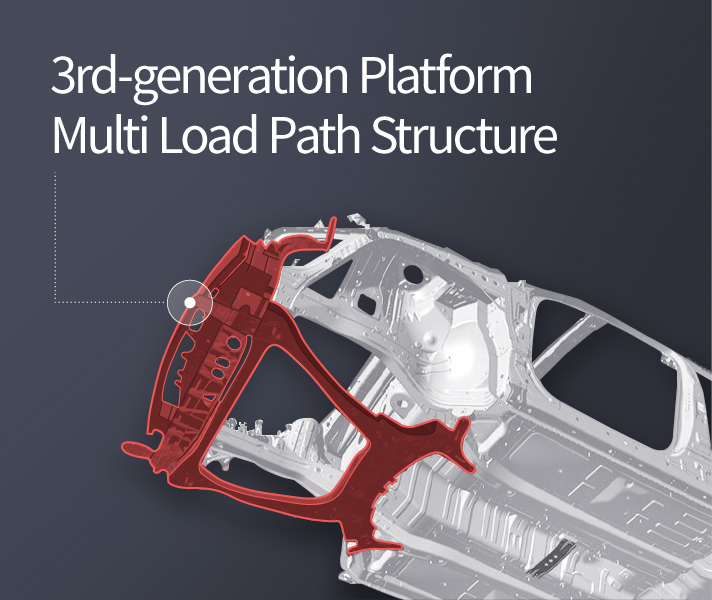
For one thing, the new Santa Fe comes with a multi load path structure―an important element of the new platform’s evolution. This structural design diversifies the pathway of shock loads upon crash, improving the efficiency of shock absorption and minimizing the impact felt by the passenger. The crux of the change is the front-wheel subframe’s H-shaped structure, which has changed into a sharp-shaped(#) one. The new subframe resists the shock with high stiffness in crash situations and more stably distributes loads during normal driving situations.
Moreover, the New Santa Fe increased the proportion of high-tensile strength hot-stamping steel sheets (150 kgf/㎟ or above) applied to the car to 14.6%. Specifically, the side structures―A-pillar, B-pillar reinforce, side-outer reinforce, etc.―have received this upgrade, which works to minimize the deformation of the car upon crashing. The engineers also simplified the structure of the crossmember to achieve improved stiffness and optimized the floor assembly process units in accordance.
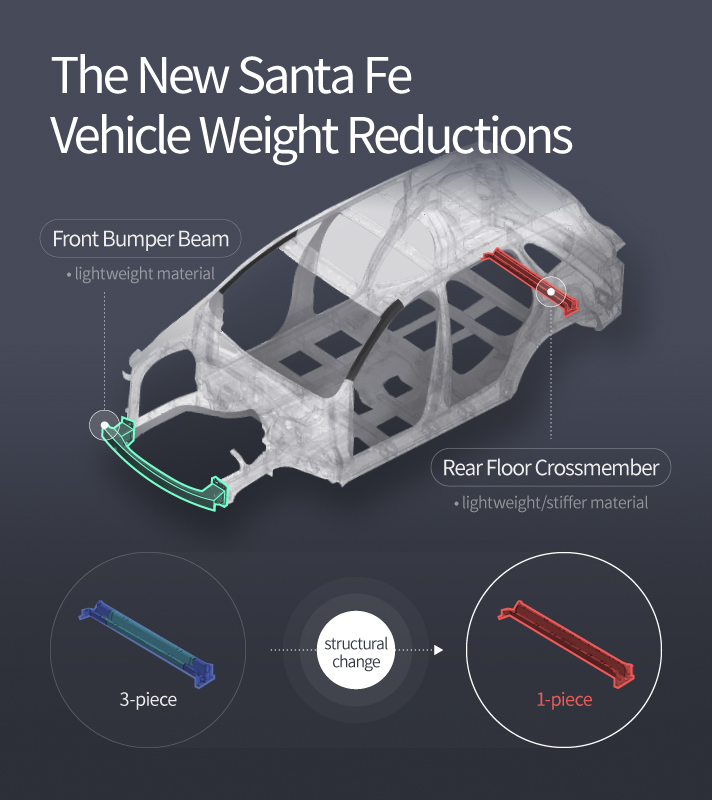
At the same time, the keyword ‘vehicle weight reduction’ was not overlooked. The front bumper beam, previously made of steel, was remade in aluminum to be more lightweight; the rear floor crossmember, which used to consist of three parts that needed welding, was redesigned into an integrated one-piece part made of ultrahigh-tensile steel plate. The resulting improvements secure not only reduced vehicle weight but also improved safety. The rear crossmember upgrade, in particular, also has the effect of better distributing the weight load on each axle, contributing to a driving performance increase.
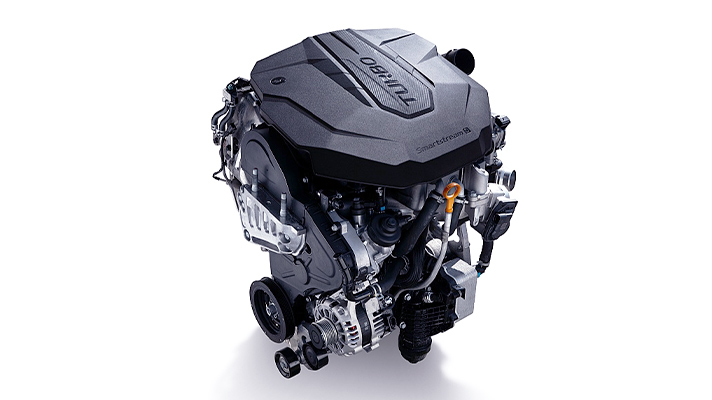
The 2.2ℓ Diesel engine received considerable changes, redesigned in response to the new RDE2 (Real Driving Emissions Step 2) emissions standards that have arisen as the buzzword of the European market. The most noteworthy feature of the new engine, however, is in the improved performance: the engine’s internal elements have been restructured and redesigned to improve not only fuel economy but also real driving performance.
First, the engineers used an aluminum block instead of the existing cast-iron one, reducing a whopping 19.5 kg of weight from the engine alone. Meanwhile, the fuel injector’s pressure level was brought up to 2,200 bar. The resistance to friction on central engine parts, such as the crank as well as the needle bearing camshaft and balance shaft, was improved as well, amounting to appreciable optimizations in performance and efficiency.
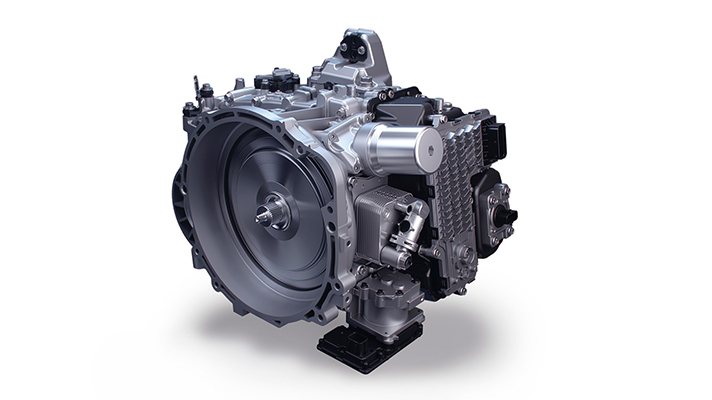
The transmission is a brand new DCT (Dual Clutch Transmission)―originally designed for premium models, the 8-speed Wet DCT, applied to a Hyundai SUV model for the first time in history, boasts an exciting shifting feel and highly desirable fuel economy.
With the new transmission mounted, the new Santa Fe shows a 3.7% improvement in fuel economy over the equivalent model with torque-converter automatics. Likewise, the zero-to-sixty marks (the time necessary to accelerate to sixty miles per hour from a full stop, an important index for powertrain performance) have been shortened by 0.3 seconds. Incidentally, there is no need to worry about the rough shifting feel that is characteristic of the DCT; with the concept of family car in mind, the shifting feel of the DCT on the new Santa Fe was smoothed out at low speeds.
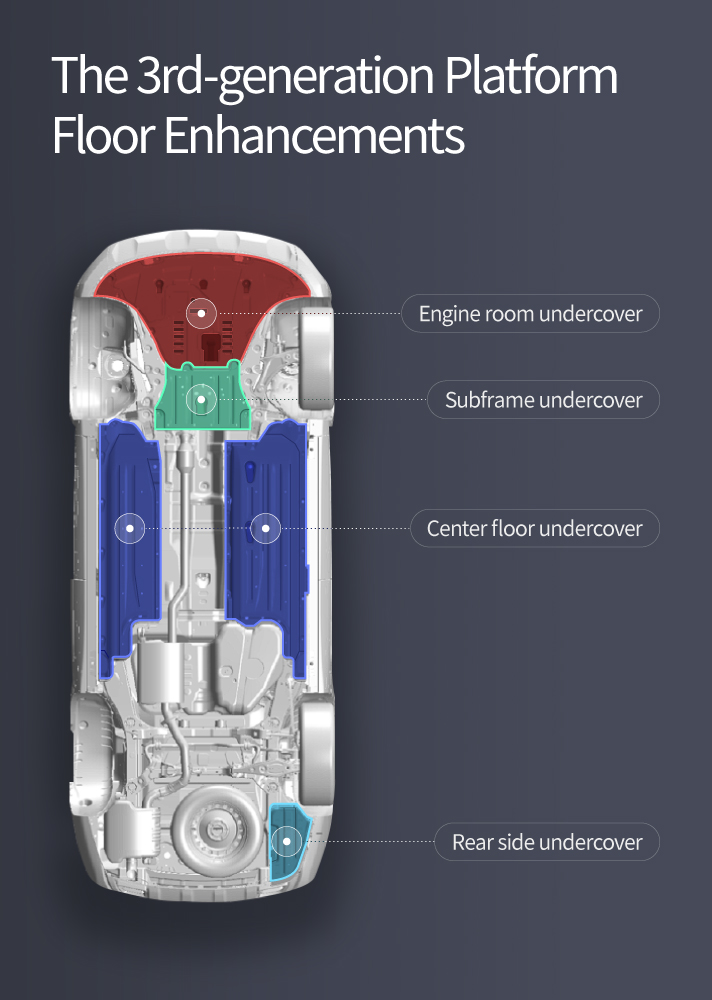
And lastly, the design of the new Santa Fe is more aerodynamic than ever. The engineers adopted the multi-inlet air curtain design with many airflow intakes. They also brought down the lower end of the front bumper and brought up the lower end of the rear bumper, trimming the parts to permit a more natural airflow. The tail lamps and the sides of the rear bumper received smooth edges designed to suppress the occurrence of vortices.
The floor parts received enhancements to increase the aerodynamic performance as well. The engine room, the subframe, the center floor, and the rear bumper side received undercovers to this end. With these adjustments in play, the new Santa Fe’s drag coefficient checks in at 0.33Cd, better than that of most other competitors in the North American market, the Santa Fe’s main target.
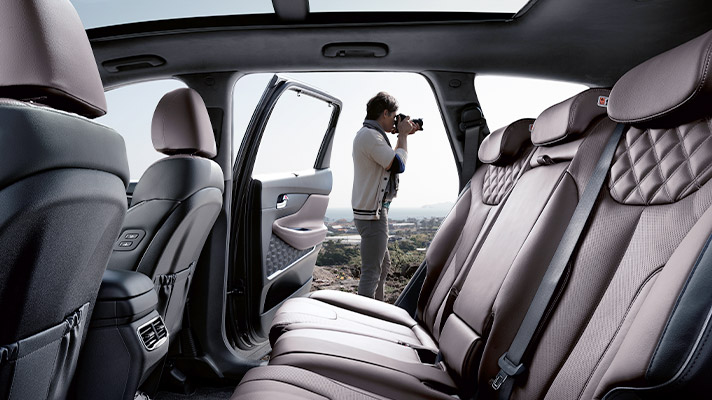
Putting it all together, the new Santa Fe goes beyond the typical facelift scenario: beyond the adjustments in looks and stylings, the aspects that form the essence of the family car identity―interior space and safety―received considerable upgrades. The mounting of the new powertrain and chassis upgrades, moreover, amount to increases in driving performance and fuel economy. Transcending the limits of a ‘facelift’ label, the upgrades to the new Santa Fe might as well be considered an introduction of the next-gen model―and this bold stride gives us all the more reasons to be excited about this trusty model line’s present and future.